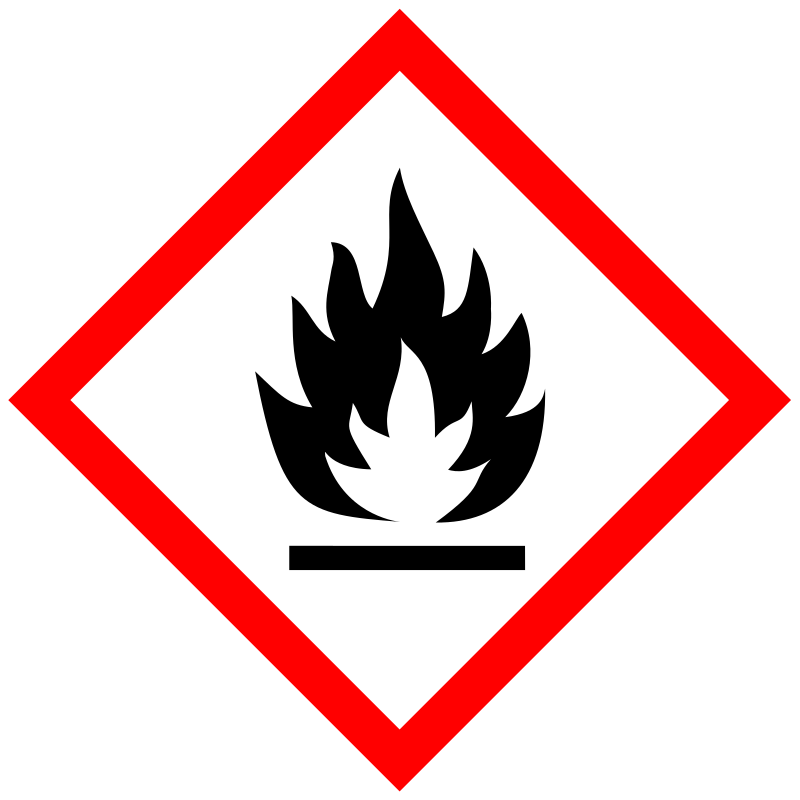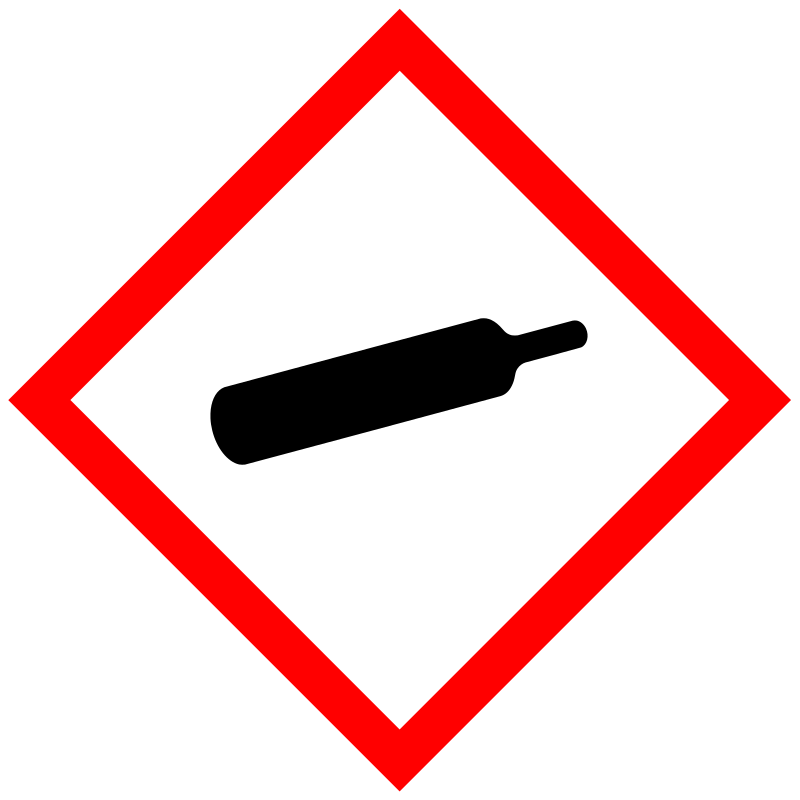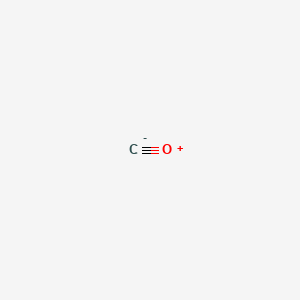D0154 | Carbon Monoxide
| Toxicity | Dose | Time | Species | Model | Method | Action | Positive criterion | Reference |
|---|---|---|---|---|---|---|---|---|
| ELECTRON TRANSPORT CHAIN | affect | 167 | ||||||
| Target | Dose | Time | Species | Model | Method | Action | Positive criterion | Reference |
|---|---|---|---|---|---|---|---|---|
| Cytochrome c oxidase | 254 | |||||||
| oxygen | competitive inhibitor | 167 | ||||||
| Pictogram | Signal | Statements | Precautionary Statement Codes |
|---|---|---|---|
   |
Danger |
H220: Extremely flammable gas [Danger Flammable gases] H331: Toxic if inhaled [Danger Acute toxicity, inhalation] H360D ***: May damage the unborn child [Danger Reproductive toxicity] H372 **: Causes damage to organs through prolonged or repeated exposure [Danger Specific target organ toxicity, repeated exposure] |
P201, P202, P210, P260, P261, P264, P270, P271, P281, P304+P340, P308+P313, P311, P314, P321, P377, P381, P403, P403+P233, P405, and P501; (The corresponding statement to each P-code can be found at the GHS Classification page.) |
    |
Danger |
Aggregated GHS information provided by 715 companies from 23 notifications to the ECHA C&L Inventory. Each notification may be associated with multiple companies. H220 (100%): Extremely flammable gas [Danger Flammable gases] H280 (47.27%): Contains gas under pressure may explode if heated [Warning Gases under pressure] H331 (99.44%): Toxic if inhaled [Danger Acute toxicity, inhalation] H360 (100%): May damage fertility or the unborn child [Danger Reproductive toxicity] H372 (100%): Causes damage to organs through prolonged or repeated exposure [Danger Specific target organ toxicity, repeated exposure] Information may vary between notifications depending on impurities, additives, and other factors. The percentage value in parenthesis indicates the notified classification ratio from companies that provide hazard codes. Only hazard codes with percentage values above 10% are shown. |
P201, P202, P210, P260, P261, P264, P270, P271, P281, P304+P340, P308+P313, P311, P314, P321, P377, P381, P403, P403+P233, P405, P410+P403, and P501; (The corresponding statement to each P-code can be found at the GHS Classification page.) |
   |
Danger |
H220: Extremely flammable gas [Danger Flammable gases] H331: Toxic if inhaled [Danger Acute toxicity, inhalation] H360D: May damage the unborn child [Danger Reproductive toxicity] H372: Causes damage to organs through prolonged or repeated exposure [Danger Specific target organ toxicity, repeated exposure] |
P201, P202, P210, P260, P261, P264, P270, P271, P281, P304+P340, P308+P313, P311, P314, P321, P377, P381, P403, P403+P233, P405, and P501; (The corresponding statement to each P-code can be found at the GHS Classification page.) |
    |
Danger |
H220: Extremely flammable gas [Danger Flammable gases] H280: Contains gas under pressure may explode if heated [Warning Gases under pressure] H331: Toxic if inhaled [Danger Acute toxicity, inhalation] H360: May damage fertility or the unborn child [Danger Reproductive toxicity] H370: Causes damage to organs [Danger Specific target organ toxicity, single exposure] H373: Causes damage to organs through prolonged or repeated exposure [Warning Specific target organ toxicity, repeated exposure] |
P201, P202, P210, P260, P261, P264, P270, P271, P281, P304+P340, P307+P311, P308+P313, P311, P314, P321, P377, P381, P403, P403+P233, P405, P410+P403, and P501; (The corresponding statement to each P-code can be found at the GHS Classification page.) |
| Organism | Test type | Route | Dose (normalized dose) | Effect | Source |
|---|---|---|---|---|---|
| mouse | LC50 | inhalation | 2444ppm/4H (2444ppm) | Toxicology and Applied Pharmacology. Vol. 17, Pg. 752, 1970. | |
| dog | LCLo | inhalation | 4000ppm/46M (4000ppm) | "Abdernalden's Handbuch der Biologischen Arbeitsmethoden." Vol. 4, Pg. 1360, 1935. | |
| rabbit | LCLo | inhalation | 4000ppm (4000ppm) | "Abdernalden's Handbuch der Biologischen Arbeitsmethoden." Vol. 4, Pg. 1360, 1935. | |
| guinea pig | LC50 | inhalation | 5718ppm/4H (5718ppm) | Toxicology and Applied Pharmacology. Vol. 17, Pg. 752, 1970. | |
| human | TCLo | inhalation | 600mg/m3/10M (600mg/m3) | behavioral: headache | Gigiena Truda i Professional'nye Zabolevaniya. Labor Hygiene and Occupational Diseases. Vol. 31(4), Pg. 34, 1987. |
| mammal (species unspecified) | LCLo | inhalation | 5000ppm/5M (5000ppm) | Naunyn-Schmiedeberg's Archiv fuer Experimentelle Pathologie und Pharmakologie. Vol. 138, Pg. 65, 1928. | |
| rat | LC50 | inhalation | 1807ppm/4H (1807ppm) | Toxicology and Applied Pharmacology. Vol. 17, Pg. 752, 1970. | |
| human | LCLo | inhalation | 4mg/m3/12H (4mg/m3) | Toksikologicheskii Vestnik. Vol. (4), Pg. 26, 1999. | |
| human | LCLo | inhalation | 5000ppm/5M (5000ppm) | Tabulae Biologicae. Vol. 3, Pg. 231, 1933. | |
| man | TCLo | inhalation | 650ppm/45M (650ppm) | American Industrial Hygiene Association Journal. Vol. 34, Pg. 212, 1973. | |
| bird - wild | LC50 | inhalation | 1334ppm (1334ppm) | Archives of Environmental Contamination and Toxicology. Vol. 12, Pg. 355, 1983. | |
| man | LCLo | inhalation | 4000ppm/30M (4000ppm) | "Practical Toxicology of Plastics," Lefaux, R., Cleveland, OH, Chemical Rubber Co., 1968Vol. -, Pg. 207, 1968. | |
| .carbon monoxide | 630-08-0 | 7U1EE4V452 |
| ACMC-1B3LA | C#O | C00237 |
| CHEBI:17245 | CHEMBL1231840 | CTK0I2914 |
| Carbon monoxide (USAN) | Carbon monoxide 10% by volume or more | Carbon monoxide [USAN] |
| Carbon monoxide, compressed | Carbon monoxide, compressed [UN1016] [Poison gas] | Carbon monoxide, compressed [UN1016] [Poison gas] |
| Carbon monoxide, refrigerated liquid (cryogenic liquid) | Carbon monoxide, refrigerated liquid (cryogenic liquid) [NA9202] [Poison gas] | Carbon monoxide, refrigerated liquid (cryogenic liquid) [NA9202] [Poison gas] |
| Carbon oxide (CO) | Carbone (oxyde de) [French] | Carboneum oxygenisatum |
| Carbonic oxide | Carbonio (ossido di) [Italian] | D09706 |
| DB11588 | DTXSID5027273 | EC 211-128-3 |
| EINECS 211-128-3 | Exhaust gas | Flue gas |
| HSDB 903 | Kohlenmonoxid [German] | Kohlenoxyd [German] |
| Koolmonoxyde [Dutch] | LS-187194 | LS-52213 |
| NA9202 | Oxyde de carbone [French] | Q2025 |
| TC-167536 | UN1016 | UNII-7U1EE4V452 |
| Wegla tlenek [Polish] | [CO] | c0369 |
| carbon monooxide | carbon monoxide | carbon(II) oxide |
| monoxide |
| DrugBank Name | Carbon monoxide |
| DrugBank | DB11588 |
| CAS Number | 12795-06-1, 630-08-0 |
| PubChem Compound | 281 |
| KEGG Compound ID | C00237 |
| KEGG Drug | D09706 |
| PubChem.Substance | 347827995 |
| ChEBI | 17245 |
| ChemSpider | 275 |
| Wikipedia | Carbon monoxide |
| HET | CMO |
| DPD | 1938 |

